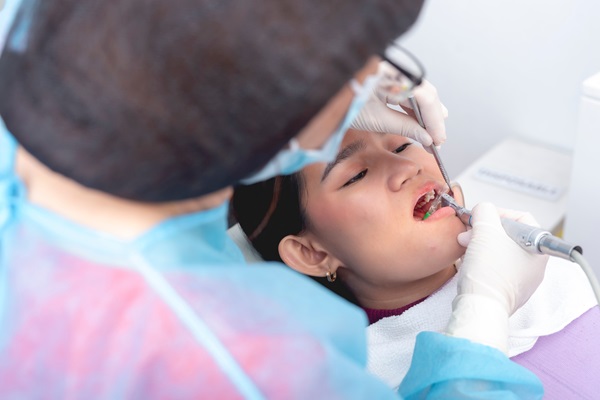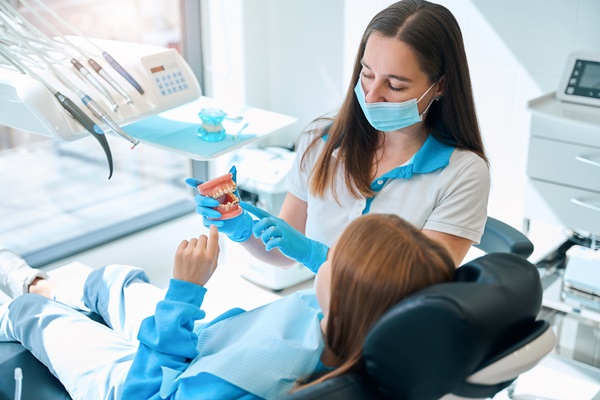 Corrective treatments in pediatric dentistry are procedures designed to address an oral health (or cosmetic) concern. Corrective treatment services can help treat cavities, teeth chips, cracks, infections, and misalignments (among other pediatric oral health concerns).
Corrective treatments in pediatric dentistry are procedures designed to address an oral health (or cosmetic) concern. Corrective treatment services can help treat cavities, teeth chips, cracks, infections, and misalignments (among other pediatric oral health concerns).
5 pediatric dentistry corrective treatments
Pediatric dentistry services include dental fillings, bonding, crowns, baby root canal, and orthodontic services. Preventive services are an important aspect of pediatric dentistry as well. Remember that each pediatric dentist offers their own unique services, so patients should check the services before scheduling a consultation.
Dental fillings
Dental fillings are perhaps the most common pediatric dentistry corrective treatment. They are primarily used to address dental cavities (enamel erosion). The procedure involves cleaning and disinfecting each cavity and sealing the tooth with amalgam or composite resin to restore its morphology and appearance and protect it from additional harm. In addition, metal fillings may be available for teeth that are more vulnerable and less visible (i.e., molars).
Dental bonding
Dental bonding, also called composite resin bonding, is a corrective treatment procedure that helps fix chips, cracks, and other forms of minor damage to teeth. Dental bonding also helps improve the appearance of your child’s smile. This is because the composite resin material is the same color as healthy natural teeth.
Dental crowns
Dental crowns are another common type of dental restoration. They cover the entire tooth and protect it from additional harm. There are different dental crowns, including tooth-colored crowns (ceramic) and metal crowns. Porcelain-fused-to-metal crowns may be available as well.
Baby root canal
A baby root canal is a more invasive corrective treatment typically used to treat a tooth infection or cavity that is deep and too large to fill with a normal filling. The procedure involves accessing the root of the tooth (the pulp chamber) and removing the infected or decayed dental pulp. The tooth is then filled and sealed; a crown is often placed after the procedure.
Orthodontic services
Orthodontic services are also relatively common in pediatric dentistry. Services include braces and clear aligners treatment. Orthodontists usually recommend their services for children between 9 and 14 with teeth and/or jaw misalignment. Many pediatric dentists also offer early orthodontic services, such as palatal expanders and/or early braces.
Preventive treatment options
Although corrective treatments are always available for children with oral health concerns, the long-term focus is usually to prevent oral health concerns from developing. However, there are preventive treatments that can help with this. Preventative treatments include routine cleaning procedures, dental sealants, fluoride treatments, and a good oral care routine at home between cleaning visits.
Reach out to our pediatric dentistry today to schedule a visit
Here at our pediatric dentistry, we value our young patients and help them with the necessary corrective treatments. While we repair a range of oral health concerns, our long-term focus is on optimal oral health for children. Call us today to learn more and get started with a consultation visit.
Request an appointment or call Nett Pediatric Dentistry & Orthodontics at 623-759-7658 for an appointment in our Phoenix office.
Recent Posts
Cavity treatment for kids is a chief concern among parents, and for a good reason. Cavities are common in children of all ages. According to the Centers for Disease Control and Prevention, over half of the kids ages 6 to 8 have had at least one cavity in a primary tooth. The good news is…
Pediatric dentistry focuses on the oral problems that occur in children. Many dental issues in kids are similar to those that occur in adults. Without proper treatment, dental problems can progress to misaligned teeth and poor oral health. If you want to maintain your child’s dental health, here are the common dental issues that pediatric…
In their early years, your youngster is still a novice in brushing and flossing their teeth, meaning that cleaning your child's teeth in that period is your responsibility. Cleaning the teeth is a skill that the child should learn. Your role is to educate your youngster on how to keep their mouths clean and healthy.…


